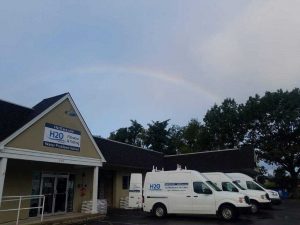
Commercial water filtration technology is similar for a house, restaurant, hospital, etc. However, a disparity in volume requirements makes the design, installation, and service more complicated for a commercial installation in Cambridge. Additionally, depending on the intended end use for the water, systems will vary.

Twin 4-cubic feet Water Softeners and High Capacity Sediment Filtration
When sizing a commercial water filtration system, doing the math and getting a reasonable forecast of volume demand in gallons is important. This will determine the appropriate size of the commercial water softener or water filtration system. Water softening resin has a finite capacity of water that it can soften before it needs to go into a backwash (or self cleaning) cycle. Additionally, determining the size of the brine tank for softener salt storage is also very important to keep the tank filling requirements at a reasonable level for the personnel maintaining this.

Sediment & Carbon Filtration Manifold
Space available for the equipment is another important consideration. To avoid a long piping run to and from the system, a good location needs to be selected. Additionally, any space restrictions will need to taken into consideration when sizing commercial water filtration or softening systems.
COMMERCIAL WATER FILTRATION FOR DRINKING WATER
The two most common commercial water filtration systems for drinking water in restaurants or other facilities are reverse osmosis or a sediment/carbon filtration system. Reverse osmosis will provide the purest water, while a sediment/carbon system will greatly upgrade water quality, but not quite to the extent of the reverse osmosis membrane system. See photo below of a reverse osmosis system that can be installed to feed a separate, dedicated faucet and/or run lines to ice makers, coffee makers, etc. (Sed/Carb system manifold photo is above). The system is sized according to estimated volume needs. For more on reverse osmosis, see link at reverse osmosis fda.gov.

Reverse Osmosis System


